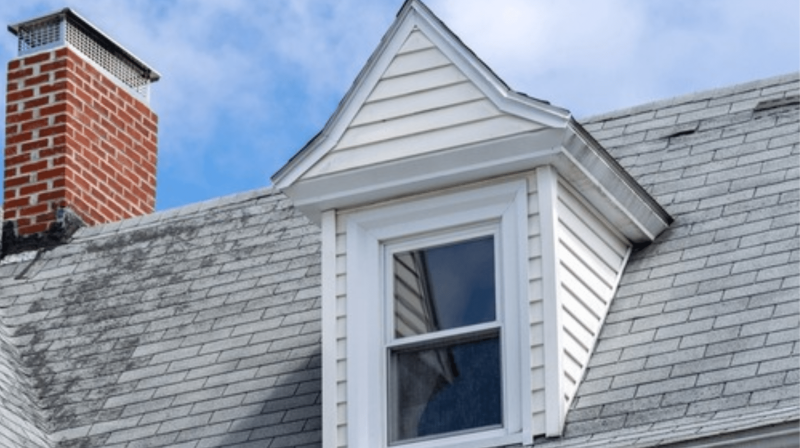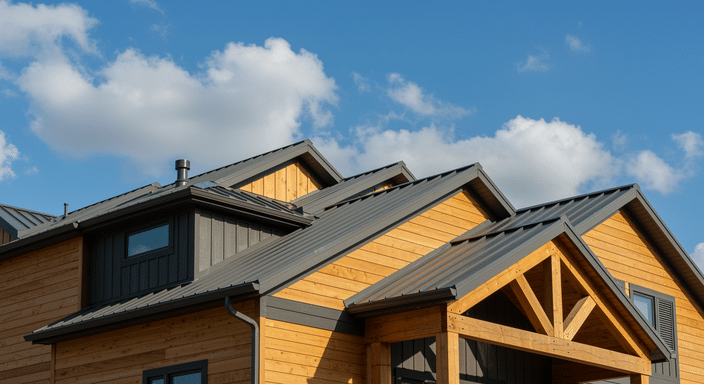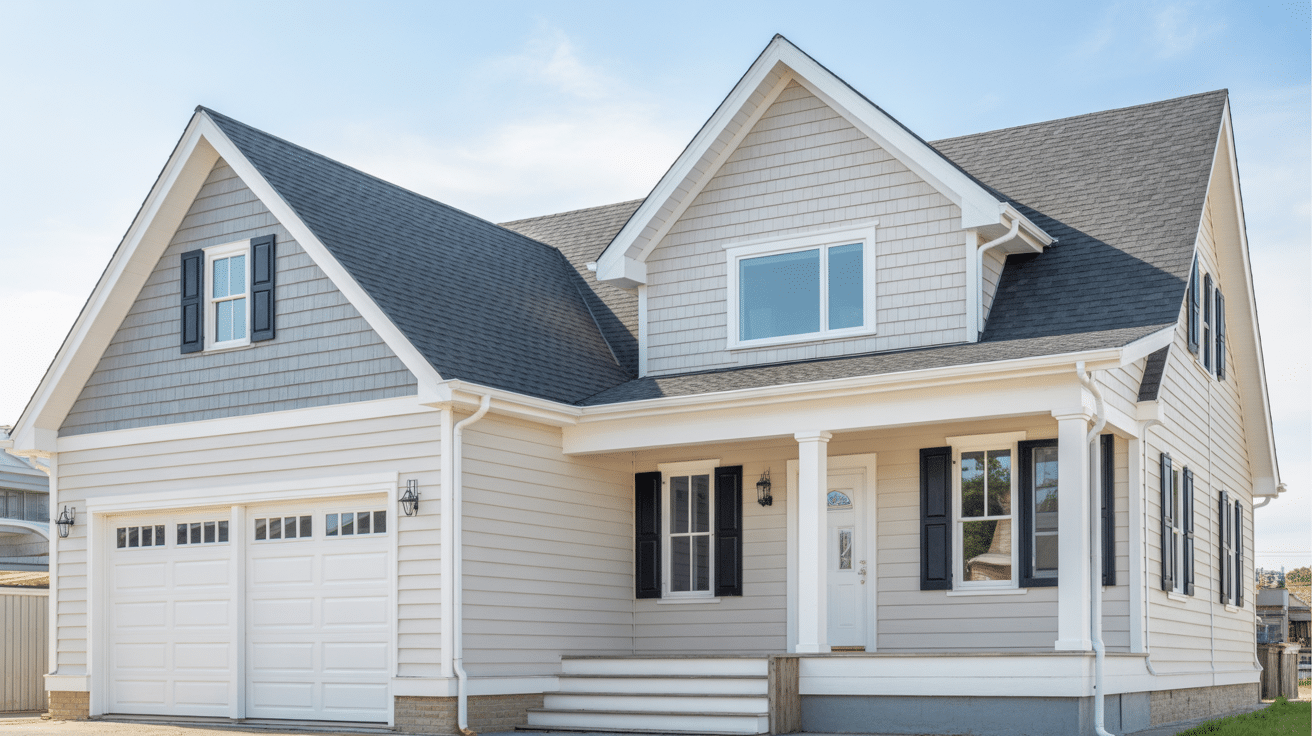Ridge vents are supposed to make your life easier. However, when they malfunction, they can become real headaches.
I’ve seen homeowners deal with everything from poor airflow to water leaks, which can be frustrating.
Most ridge vent problems have straightforward solutions. You don’t need to be a roofing expert to understand what’s going wrong or how to fix it. Some issues you can tackle yourself, while others might require a pro.
Let’s identify the most common ridge vent problems you’re likely to face and find the practical solutions that work.
What are Ridge Vents?
I’ll start with the basics. A ridge vent is a continuous opening that runs along the peak of your roof, covered by a specially designed cap. It’s simple but effective when installed correctly.
Ridge vents work by creating natural airflow in your attic.
Hot air rises and escapes through the ridge vent, while cooler air enters through the soffit vents near your roof’s edge. This creates a steady circulation pattern that maintains a balanced attic temperature.
Compared to other ventilation systems, ridge vents have some clear advantages. They’re also nearly invisible from the ground, so they won’t compromise your home’s appearance.
Plus, they provide consistent ventilation along your entire roof line instead of just at specific points.
Common Signs of Ridge Vent Problems
I’ve learned that ridge vent problems don’t always announce themselves loudly. Sometimes, you need to know what to look for.
Unusual Attic Temperatures or Humidity: Your ridge vent isn’t performing its intended function. You might notice frost on the underside of your roof deck or feel sticky, humid air when you peek into the attic space.
Water Stains or Mold on Ceiling/Walls: Water damage is one of the most apparent signs I see. Look for brown or yellow stains on your ceiling, especially near the roofline.
Persistent Drafts or Poor Air Circulation: Your HVAC system might run constantly but never quite reach the right temperature. These circulation issues often stem from ventilation problems.
Animal or Insect Intrusions: If you’re hearing scratching noises in your attic or finding evidence of birds, squirrels, or insects, your ridge vent might have gaps or damaged screening. This is both a ventilation issue and a potential health concern.
The Top Ridge Vent Problems and How to Fix Them
Ridge vent problems can turn your home’s ventilation system from helpful to harmful.
I’ve tackled these issues countless times, and the good news is that most have clear solutions once you know what to look for.
1. Ridge Vent Leaks After Rain or Snow
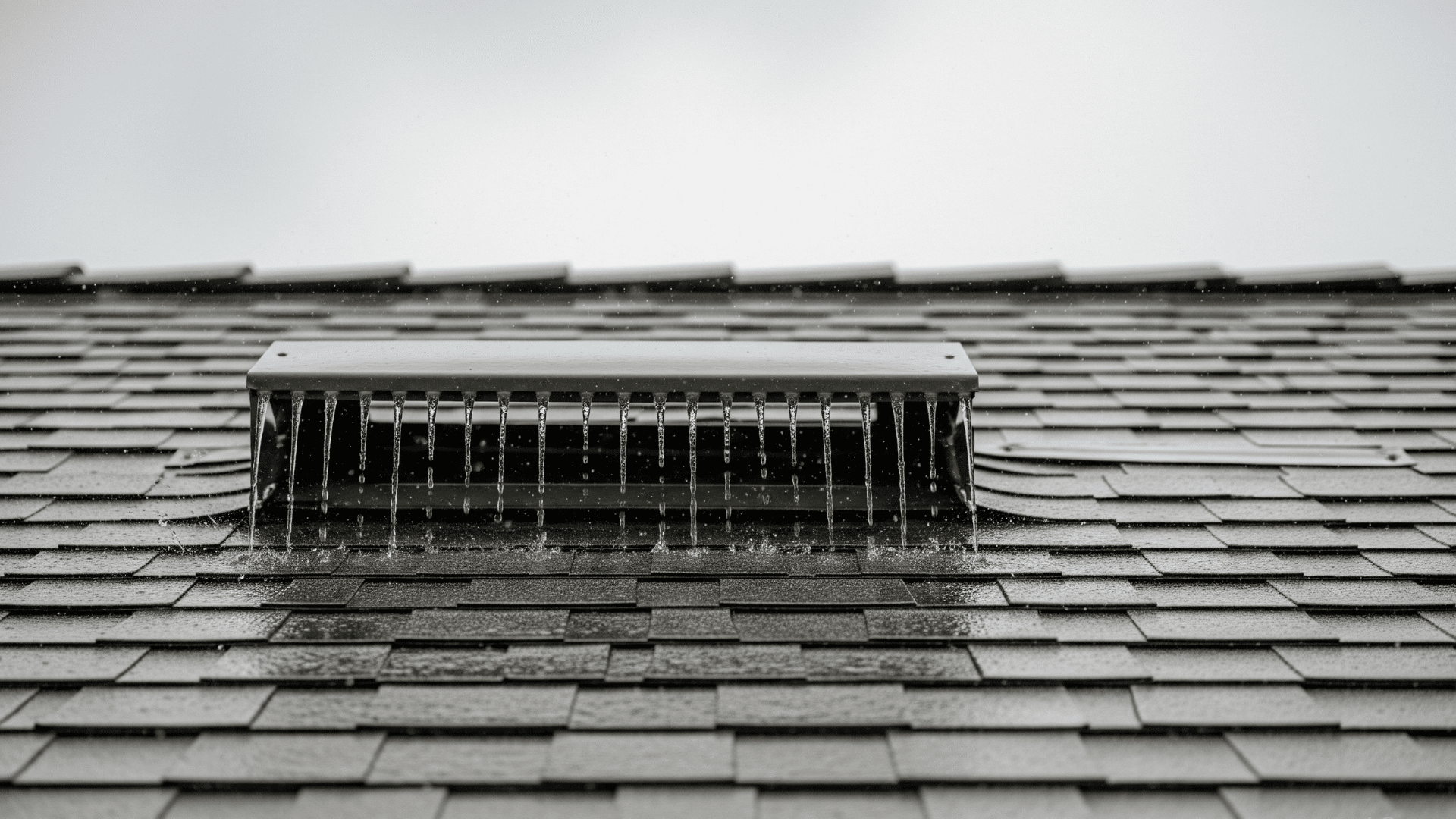
Ridge vents are supposed to keep water out, but when they fail, homeowners often find stains or drips after storms. This issue is widespread in areas with high winds or poor flashing.
| Category | Details |
|---|---|
| Causes |
|
| Solutions |
|
2. Inadequate Ventilation and Heat Build-Up
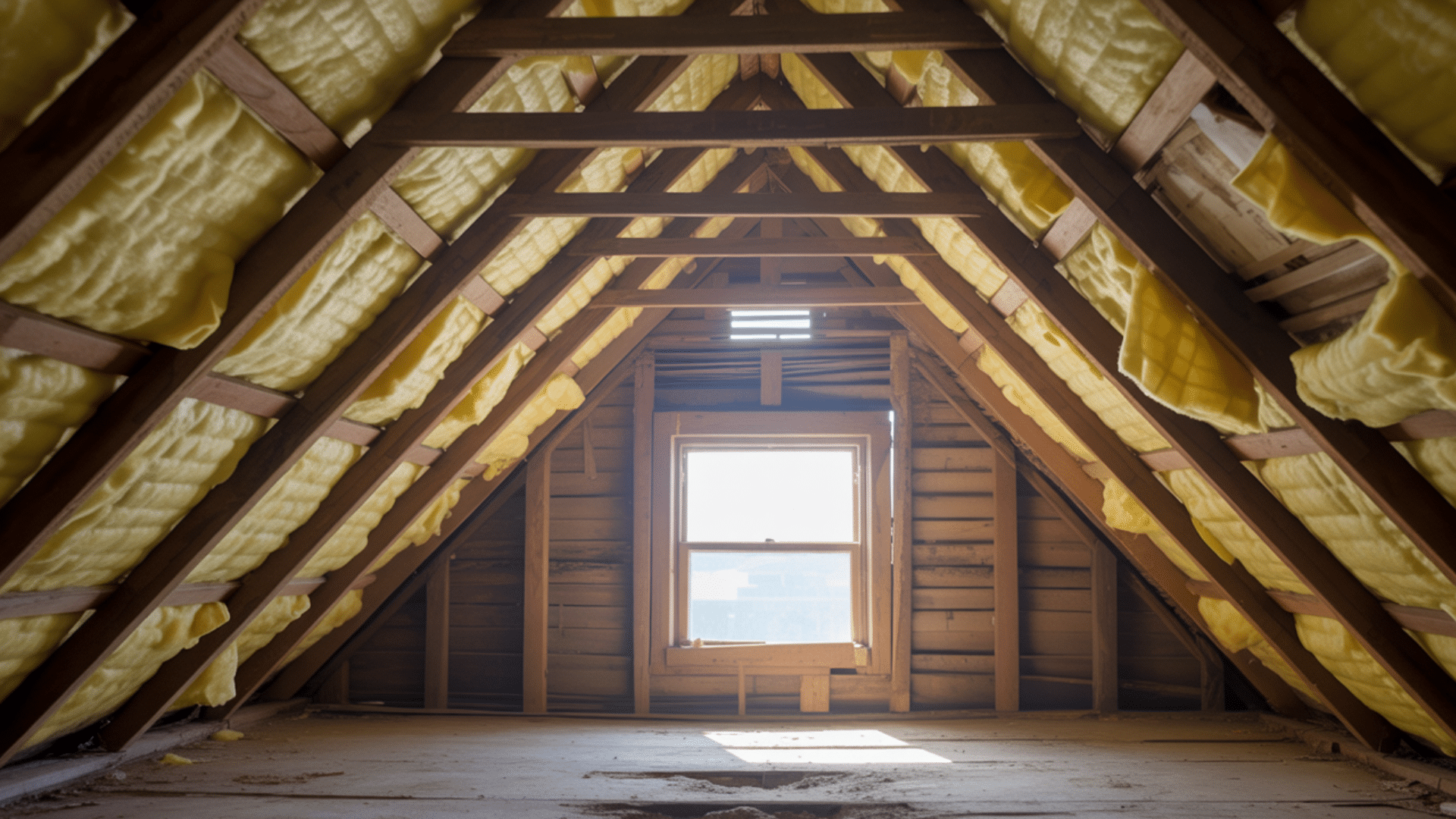
If your attic feels like a sauna, your ridge vent system might not be pulling enough air. This often leads to premature roof aging and higher energy bills.
| Category | Details |
|---|---|
| Causes |
|
| Solutions |
|
3. Noise Issues: Whistling or Rattling Sounds

Annoying sounds from ridge vents can disrupt your peace, especially during windy nights. These noises are often signs of weak structural components or turbulence in airflow.
| Category | Details |
|---|---|
| Causes |
|
| Solutions |
|
4. Pest or Debris Infiltration
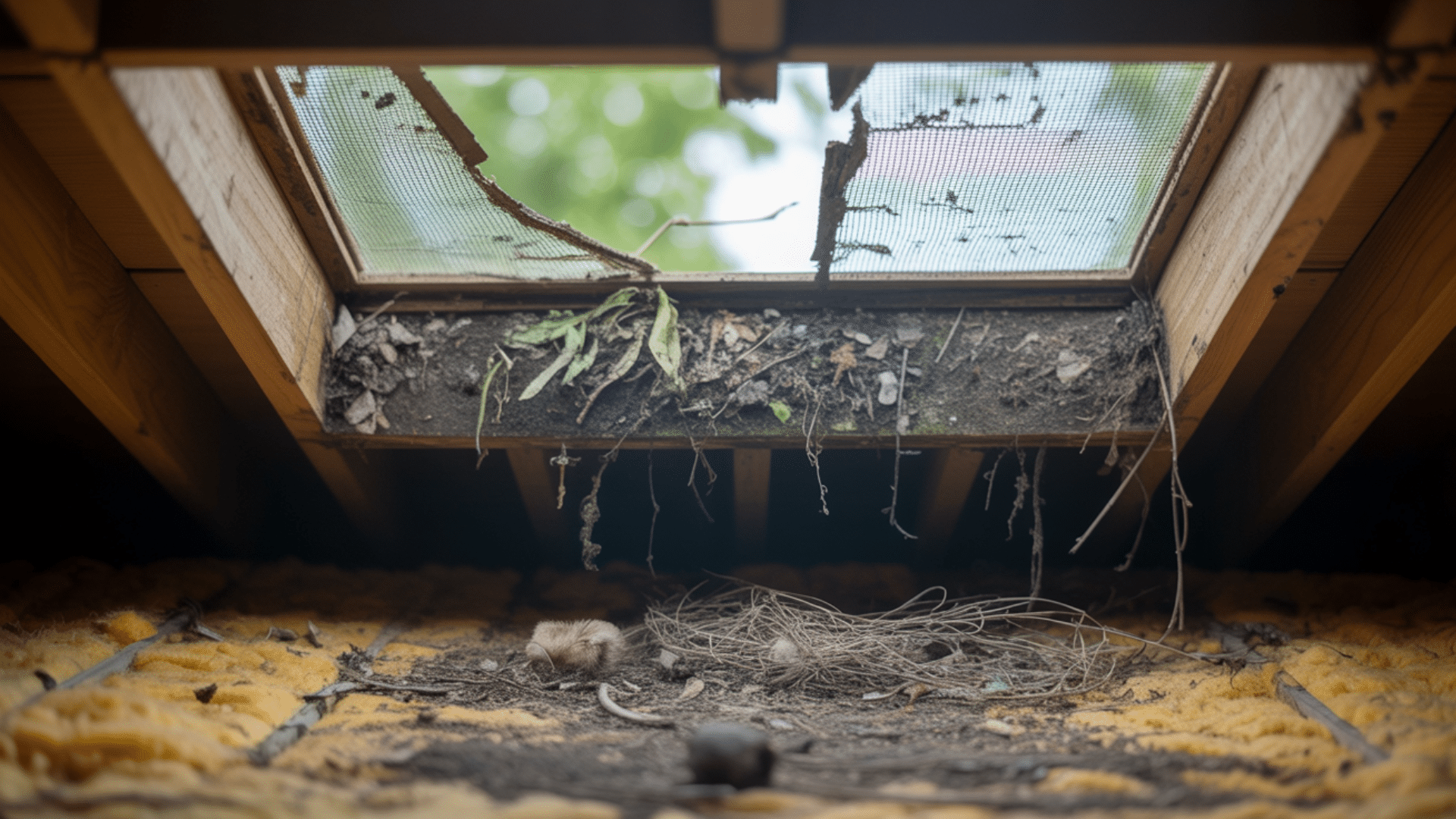
Birds, bats, bees, and even leaves can find their way into your attic through open or damaged ridge vents. These intrusions not only block airflow but can also lead to insulation damage.
| Category | Details |
|---|---|
| Causes |
|
| Solutions |
|
5. Premature Deterioration or Cracking
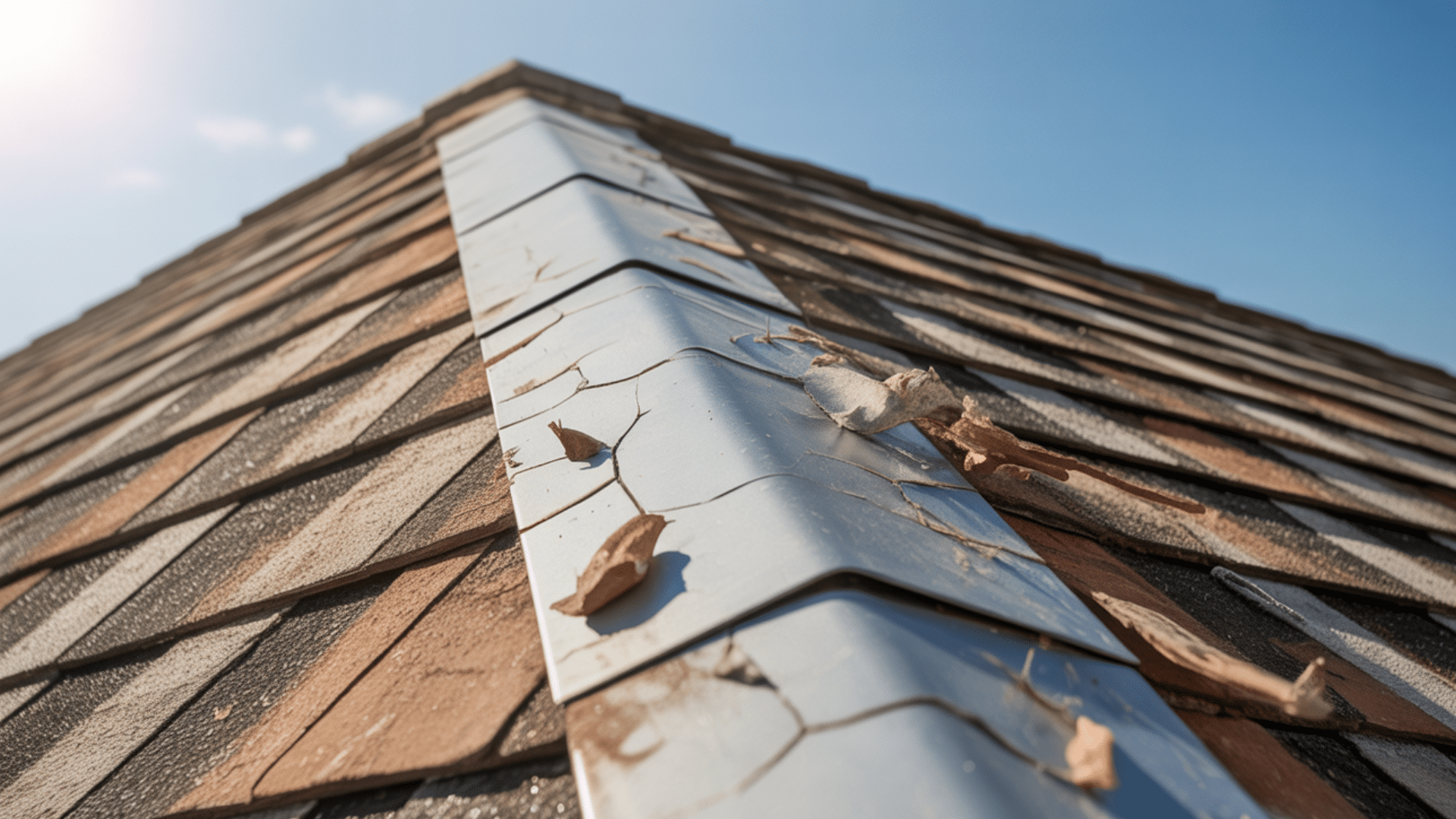
Ridge vents made from low-grade plastics or poorly maintained materials can crack and warp over time, compromising both their function and aesthetic appeal.
| Category | Details |
|---|---|
| Causes |
|
| Solutions |
|
Maintenance Tips to Avoid Future Problems
The best way to deal with ridge vent problems is to catch them before they become major headaches. I’ve learned that a little preventative care goes a long way in keeping your ventilation system running smoothly.
- Routine Seasonal Inspections (What to Look For) – Check your ridge vents twice a year, ideally in spring and fall. Look for loose or damaged caps, cracked flashing, and any gaps where water or pests could get in.
- Keeping Soffit and Intake Vents Clear – Your ridge vents can’t function correctly if air can’t enter through your soffits. Clean out any debris, leaves, or insulation that’s blocking the intake vents. Ensure landscaping isn’t growing too close to your soffits, as this can restrict airflow.
- How to Monitor Airflow and Attic Conditions – Visit your attic during various weather conditions to gauge what’s normal. Hot summer days should show steady air movement, not stagnant heat. Check humidity levels and watch for condensation buildup during temperature changes.
- When to Call a Pro vs. DIY Fixes – Handle basic cleaning and minor adjustments yourself, but call professionals for anything involving flashing repairs, structural issues, or central installations.
Ridge Vent Alternatives
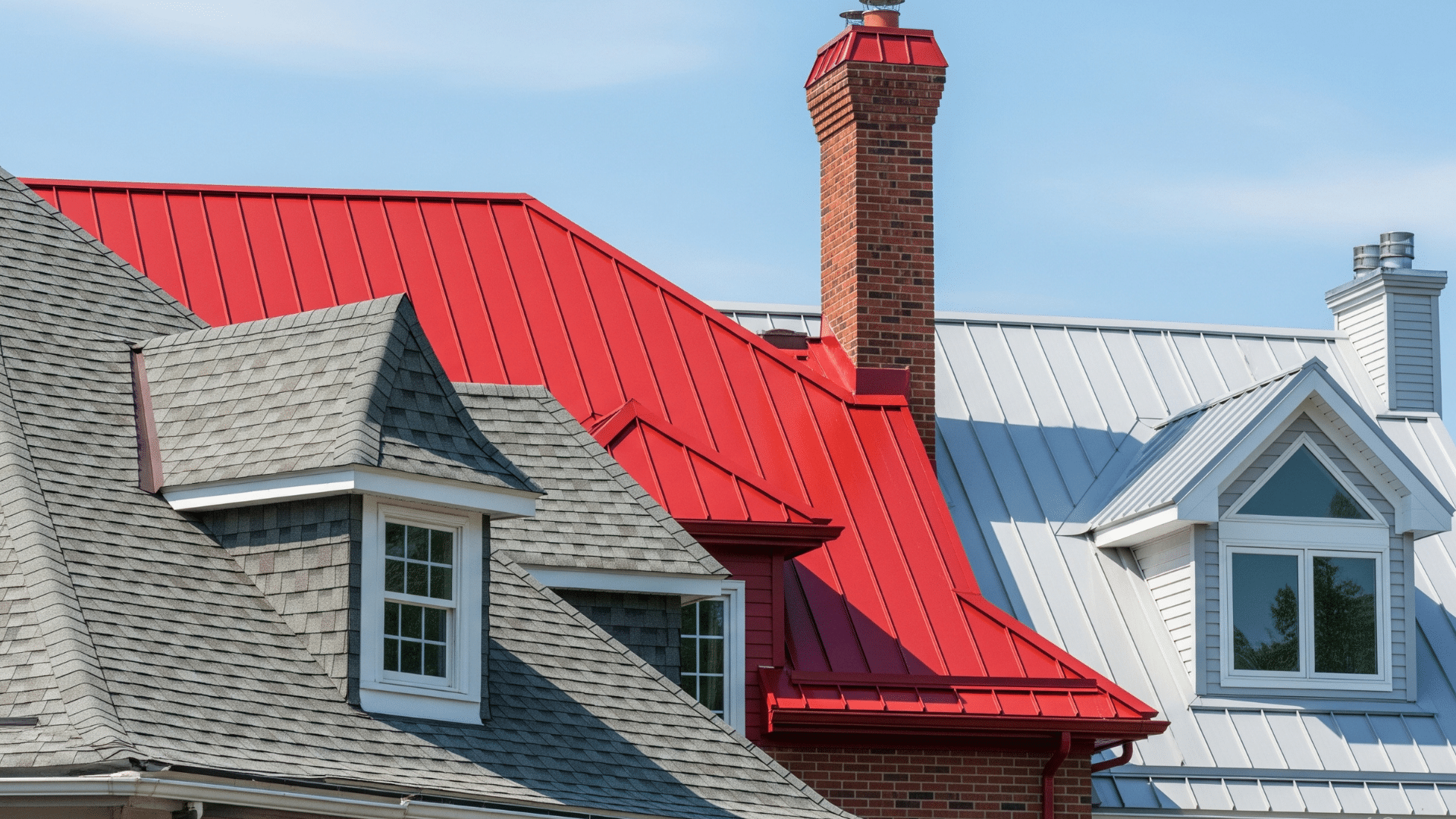
While ridge vents are a popular solution for attic ventilation, they aren’t always the most effective or compatible option, especially depending on your roof’s structure or your local climate.
If you’ve faced persistent problems or are planning a new roof installation, it may be time to explore other alternatives.
When a Ridge Vent Isn’t Right for Your Roof Type
Not every roof plays well with ridge vents. Their effectiveness heavily depends on proper design and support from intake vents. Ridge vents may fall short if:
- Your roof has too few eaves or lacks soffit vents for a balanced intake
- You have a hip roof with short ridgelines, limiting vent coverage
- The attic has complex, multi-level framing that disrupts airflow
- Your area experiences horizontal rain and high winds, increasing the risk of leaks
- In such cases, alternative vent types may offer more control and performance.
Comparing Box Vents, Gable Vents, and Power Fans
Each alternative provides its own set of pros and cons.
| Vent Type | Best For | Pros | Cons |
|---|---|---|---|
| Box Vents (aka turtle vents) | Simple roofs without long ridges | Easy to install, budget-friendly | Require multiple units, less aesthetic |
| Gable Vents | Homes with open gable ends | Passive operation, low maintenance | Less effective without strong cross-ventilation |
| Power Fans (solar or electric) | Hot or humid climates | Actively pulls out hot/moist air | Requires electricity, can depressurize the attic |
Tip: Hybrid systems (e.g., combining gable vents with a ridge or fan system) can work well when designed correctly, but mixing systems improperly can hinder airflow.
Costs and Effectiveness in Different Climates
The right ventilation system also depends on where you live and how severe your seasonal conditions are:
- In hot, humid regions, power fans or solar attic fans can efficiently remove moisture and heat, making them a worthwhile investment despite their higher upfront costs.
- In cold climates, ridge vents work well if paired with airtight baffles to prevent ice damming. Box vents can also be effective when appropriately spaced.
- For mild or dry climates, passive systems like ridge or gable vents often suffice and are more budget-friendly.
Cost Snapshot (Approximate):
- Ridge vents: $2–$3 per linear foot
- Box vents: $25–$40 per unit
- Power attic fans: $100–$500 per unit (plus installation)
Note: Prices can vary by location, brand, and installer.
Before deciding, consider ventilation balance, attic insulation, and roof shape; these factors can make a bigger difference than the vent type alone.
Final Thoughts
Ridge vent problems don’t have to derail your home’s comfort or your budget. Most issues I’ve covered here are manageable with the right approach and some basic maintenance.
The key is catching problems early and knowing when to tackle them yourself versus when to call in help.
Your ridge vents are working hard to keep your home comfortable year-round. Give them the attention they deserve, and they’ll serve you well for decades.
When in doubt, don’t hesitate to seek professional advice – it’s often less expensive than major repairs down the road.


